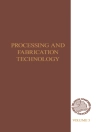Advances in technology have rapidly changed the way we treat ophthalmic diseases, especially with the development of new biomaterials used as prosthetics, for drug delivery devices, or to regenerate tissue.
Bridging the gap between biomaterials scientists and ophthalmologists, this book includes overviews of devices and cutting-edge research on current and future strategies to treat acute and chronic diseases in the eye.
Edited by leaders in the field, the book provides perspectives for both biomaterials scientists and ophthalmologists. Biomaterials scientists are given a background to the challenges in ophthalmology that advanced materials could solve. Ophthalmologists are provided a background on materials to enable them to better understand the devices they are using and their advantages and challenges. All readers are provided with a critical review of the current and future state of devices that are being used or are under development in devices, regenerative medicine, and drug delivery.
This book is for those working in biomaterials science, biomedical engineering, chemical engineering, and clinicians specialising in ophthalmology, as well as those working in polymer science-based medical technologies.
Inhaltsverzeichnis
- Anatomy and Physiology of the Eye
- Contact Lenses: Current Designs and New Strategies
- Intraocular Lenses
- Vitreous Substitutes
- Emerging Biomaterials for Retinal Implants
- Orbital Implants After Enucleation and Evisceration
- Use of Modern Biomaterials in Ocular and Facial Prostheses
- Strategies to Replace and Regenerate the Cornea and Other Tissues in the Anterior Segment
- Biomaterials in Retinal Regeneration
- Tarsal Plate Substitutes in Modern Reconstructive Plastic Surgery of Eyelids
- Anterior Segment Drug Delivery
- Protecting Sight: Advances in Drug Delivery to the Posterior Segment to Combat Vision Loss
- Microneedle Approaches to Ocular Drug Delivery
- Smart Materials in Ophthalmic Applications
- Negotiating the Regulatory Pathway












